What would you do if you found out you had a near-certain chance of developing Alzheimer’s? And how would it affect your life if you got that information in your 40s, long before most people start worrying about developing dementia or looking into long-term care?
That’s what Jamie Tyrone has been grappling with since she was given that information by mistake nine years ago. At age 48, Tyrone was told that she had two copies of ApoE4, the single genetic factor most associated with Alzheimer’s disease. Carrying one copy of the gene, inherited from one parent, raises a person’s risk three-fold. Jamie’s risk is raised 12 times—or a 91 percent lifetime risk.
She first responded the way anyone would—in shock, she faced anxiety and depression over her newfound knowledge. But Tyrone, a bubbly, outgoing redhead who has a tendency of befriending everyone she meets, soon picked herself up and changed her life, starting with healthy lifestyle habits and starting her own Alzheimer’s awareness organization, Beating Alzheimer’s By Embracing Science—BABES, for short.
And though Tyrone drew what some might see as an unlucky genetic card—just two percent of the population has two copies of ApoE4—her brain suddenly became very valuable to science.
Tyrone is a research participant at Banner Alzheimer’s Institute in Phoenix, Arizona. She does it because she one day hopes to know how it feels to say a prevention or cure has been found. Being a “lab rat,” as she lightheartedly refers to herself, makes her feel hopeful for the future.
But Alzheimer’s research faces a big hurdle: There is a shortage of volunteers. And like any research, finding a cure depends on participation.
Tyrone is sharing what it’s really like to be in a clinical trial over the course of three days at the Banner Alzheimer’s Institute in Phoenix.
Day 1: The Brain Scan
Upon waking I realized that this was going to be a busy but productive day. I was looking forward to meeting with my Banner Alzheimer’s Institute family. Yes, family! I’ve never met a more kind, compassionate and dedicated group. They are rockstars in my book.
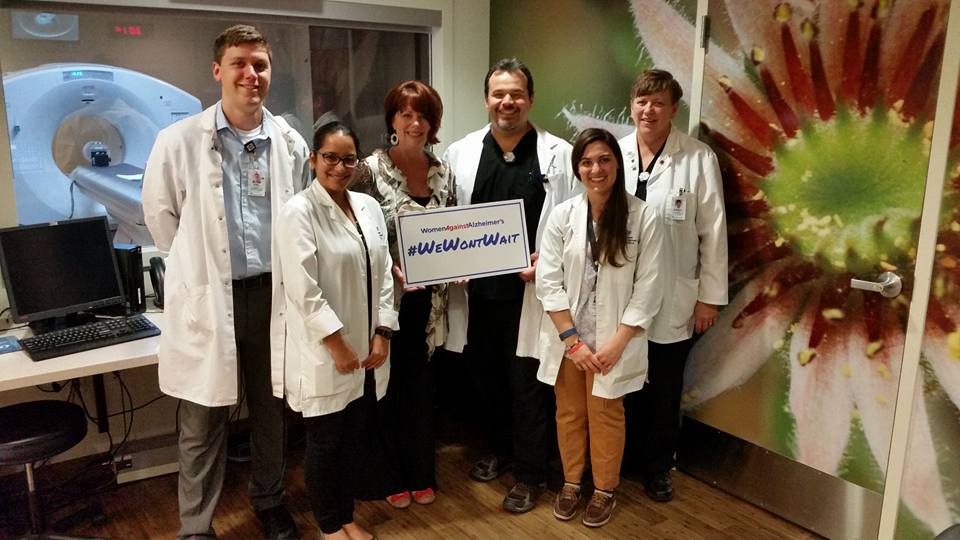
Here is a tip for all of you future lab rats. Remember how your mother told you to wear clean underwear in case you were in an accident? Well, pristine socks are a must if you’re participating in research!
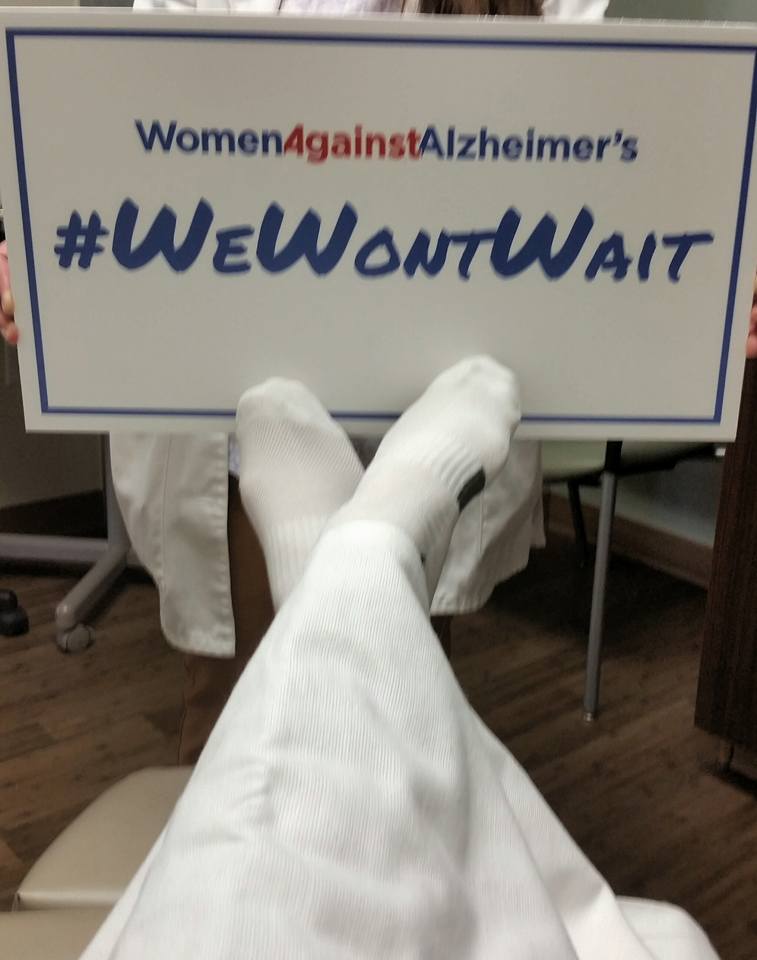
After checking in and getting settled, today’s visit included several scans to determine the presence of amyloid—the defining characteristic of Alzheimer’s—and glucose metabolism in the brain. Today they use a PET scan to measure the protein in my brain. I was wrapped up in warm blankets and given an IV—it’s just a tiny prick, then it’s over. Unlike with an MRI, your whole body does not enter the scanner—just your head. As I was lying there, I remembered all of my family members who have suffered and succumbed to this horrible disease. I believe they are with me on this day, guiding the team as we try and understand this disease. Being a research participant is very rewarding. I hope I make them proud.
I don’t get to see the results of my scans at any point during the study, which I’ve been participating in for nine years. I don’t know whether or not amyloid is building up in my brain. But the researchers will flag your scan if they see any other type of non-Alzheimer’s abnormality, like a brain tumor. That’s comforting to me and I kinda feel like it’s my brain check-up every two years.
After my scans, I head back to a friend’s house, where I’m staying. Participants are offered a stipend for being in the study, which I put toward travel from San Diego to Phoenix and food while I’m here. I’m now putting my head on my pillow, dreaming of a cure.
Day 2: Cognitive Testing
Today I’m at the Mayo Clinic in Scottsdale to go through cognitive testing. To be honest, this part is much more anxiety inducing than getting a PET scan. One would think that this is a “no brainer” (pun intended) because the questions aren’t difficult, but it reminds me that we are all susceptible to cognitive issues, especially those who have Alzheimer’s in their families and have seen how the disease begins to unravel the ability to think and process information. It also elicits a bit of fear when I’m not able to remember things that I think I should. I’ve been told by those who administer the tests that this is fine and not to expect perfection, but I am no longer able to brush it off as a coping mechanism. As a research participant who also runs an organization, I know too much about the disease, like the fact that it begins decades before symptoms of memory loss set in, to relax.
Today I met with Bruce Henslin, study coordinator for Mayo who has been with me on my research journey since the very first day, seven years ago. It’s comforting to see him every time I’m here. Like I said yesterday, all of the researchers I work with have come to feel like family, and I am grateful to them for the role they’ve played in finding a cure.
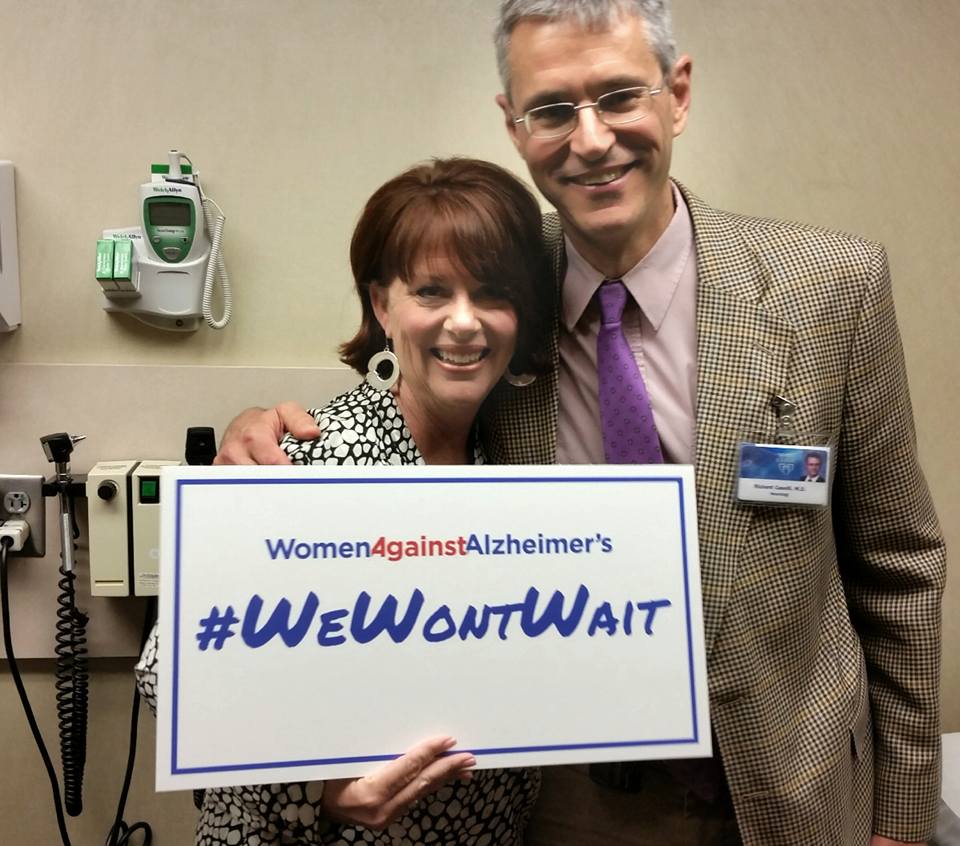
I also had the pleasure of meeting a new member of the team, Cari. I’ve come to the conclusion that the cognitive testing portion is the closest to feeling like a lab rat as I attempt to navigate what I feel is like the ultimate metaphorical maze. Some of it takes place on a computer and some of it is just answering the questions Cari asks. Some are simple—who is the President, where are you right now, what is today’s date—and some are more difficult for me, like adding numbers in different sequences. Today she shows me photographs of different faces and asks me to identify which are the same person.
Last but not least, Dr. Richard Caselli, M.D., (whom I affectionately refer to as the “Maze Master” because he is in charge of the cognitive tests) made it a point to visit with me even though his schedule was packed. He started the conversation by thanking me for participating in this research study. But I can’t help but feel it’s me who should be thanking him. I owe a world of gratitude to him and to all of the other dedicated researchers who are hell bent on finding a cure.
As I lie my head on my pillow tonight, I will never stop dreaming of a cure … stay tuned!
Day 3: Final Scans and Goodbyes
I woke up this morning realizing that this would be my last day visiting my “family” at Banner. It is rather bittersweet as I know I will miss them, but I look forward to going home to San Diego and seeing my unbelievably supportive husband.
I did not have to arrive until 11 a.m. so I took the opportunity to sleep in. Once again, as I arrived I was greeted with hugs and gratitude by research coordinators Katie DeMarco and Joel Hetelle. Some people say participating in research is altruistic, but I will have to kindly to disagree. To be given the welcomes and hugs warms my soul to no end.
After a PET scan and MRI it was time to say goodbye to the team. Dr. Eric Reiman, Executive Director of B.A.I., and Jessica Langbaum, Ph.D., Associate Director of the Alzheimer’s Prevention Initiative graciously took time out of their busy schedule to bid me a fond farewell.
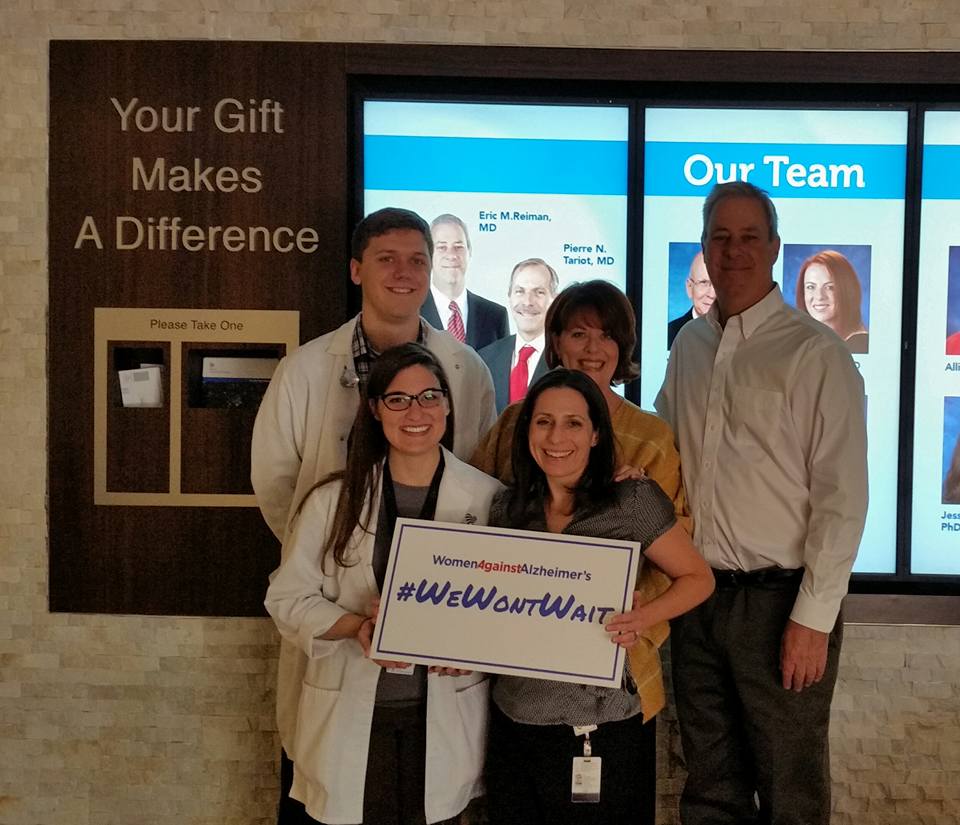
Some of you may wonder why I was carrying around a #WeWontWait sign these past three days. I am honored to be a founding member of the WomenAgainstAlzheimers network, a group of women who are passionate about the fight against Alzheimer’s. Fellow founding member Rebecca Ailes-Fine met me with her sweet dog Jasmine at the end of each day in Phoenix, extending her kind and loving support. When women come together for a worthy cause, we are unstoppable!
My heart sings everyday knowing that I’m doing what I can to make a difference in finding a cure. One of the most rewarding and meaningful things I have ever done in my life is being a research participant. I hope that by sharing my journey it will inspire others to follow suit.
This represents the author’s experience and opinion. If you’d like to find out more about joining a clinical trial, you can visit the Alzheimer’s Prevention Registry. GeneMatch is a service that provides free genetic testing to connect volunteers with studies like the one mentioned here that need participants.
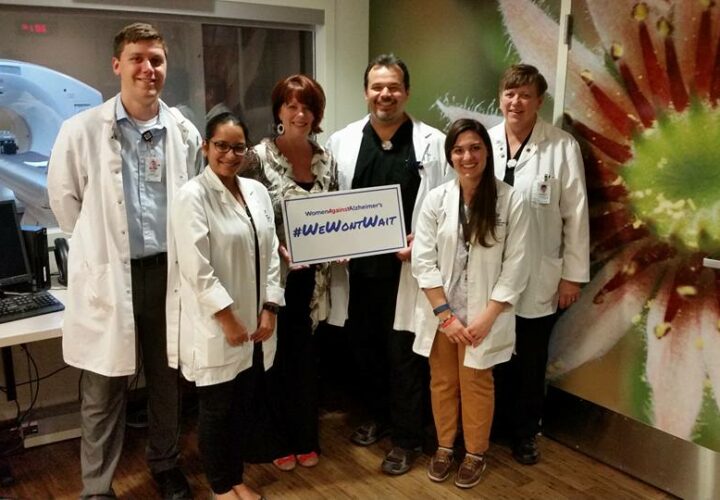

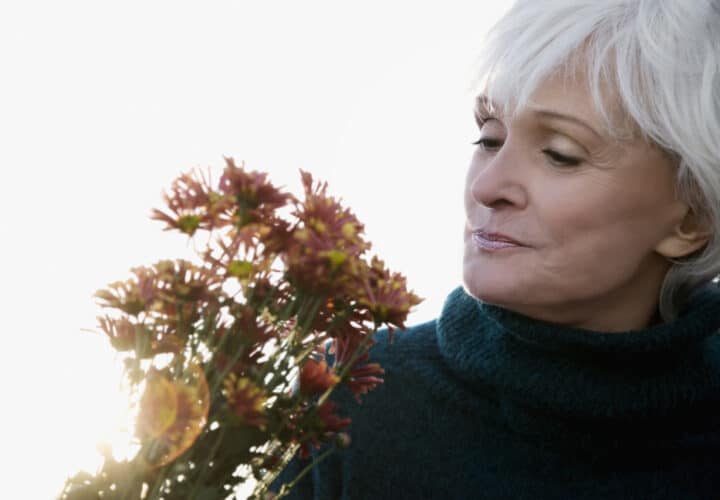
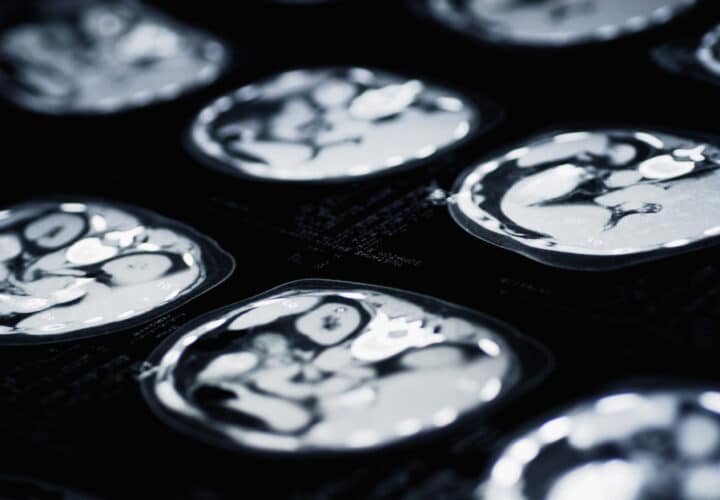
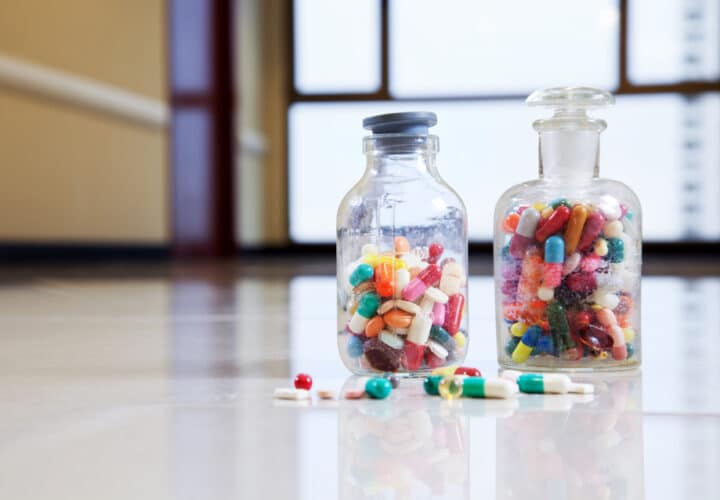
Thanks so much for sharing my friend Jamie! Those of us who know you and are in clinical trials as well know you are using the term “Human Lab Rat” lightheartedly. I’ve had many people tell me they refuse to enter a trial because they don’t want to be a lab rat for the biopharmaceutical companies. But we know when we enter a clinical trial the drug is well beyond testing in the laboratories on mice/rat and approved for safe testing on humans by the FDA. Our role is about the efficacy of the drug trial. I’m happy to report that I too am in the 28 month of my Biogen Aducanumab clinical trial for Alzheimer’s disease with no side effects. Actually, my most recent memory/cognitive exam I scored 100%, an improvement since my diagnosis. The clinical trial along with a healthy living lifestyle has contributed to this success. Much love my friend!
Jeff, you are an amazing warrior! I’m honored and humbled to know you!
i enjoyed reading your article this morning on being an alzheimers lab rat.
i too am a lab rat for alzheimers disease research.
i also have the apoe4 apoe4 gene but it caught up with me 8 years ago.
thankfully i was diagnosed early.
i am 18 months into the biogen aducanumab study at ucla.
i am excited since i have just entered the long term extension part of the study where i finally for sure get the real drug.
i too understand wearing good comfortable clean socks.
as i wrote my friday blog on being in the study i was reading my alzheimers news feeds when i saw your article.
i understand.
i dont mind being a lab rat
if it helps me, my family or others
im ok with it
dnash
Thanks from all of us who work with people who have dementia – your dedication and participation in finding a cure is admirable. Keep up the fight!!!!
Very Interesting.
Love your article. I was diagnosed July 2016 at age 60. My Dad died in 2013 from a 10 year battle and my grandfather several years before my Daddy. I so much would like to participate in a trial. I have contacted Banner but because my neurologist has me on Namzaric 28/10 they say I am not a candidate. The past couple of months I can see a decline. Like getting mail and hiding it and swearing it never came. I told my husband to get mail and filter before I get to it. I still drive and stay active with my embroidery business. I have to take lots of notes and depend on my iPhone to exist. My husband is great also. I so much would like to help find a cure.